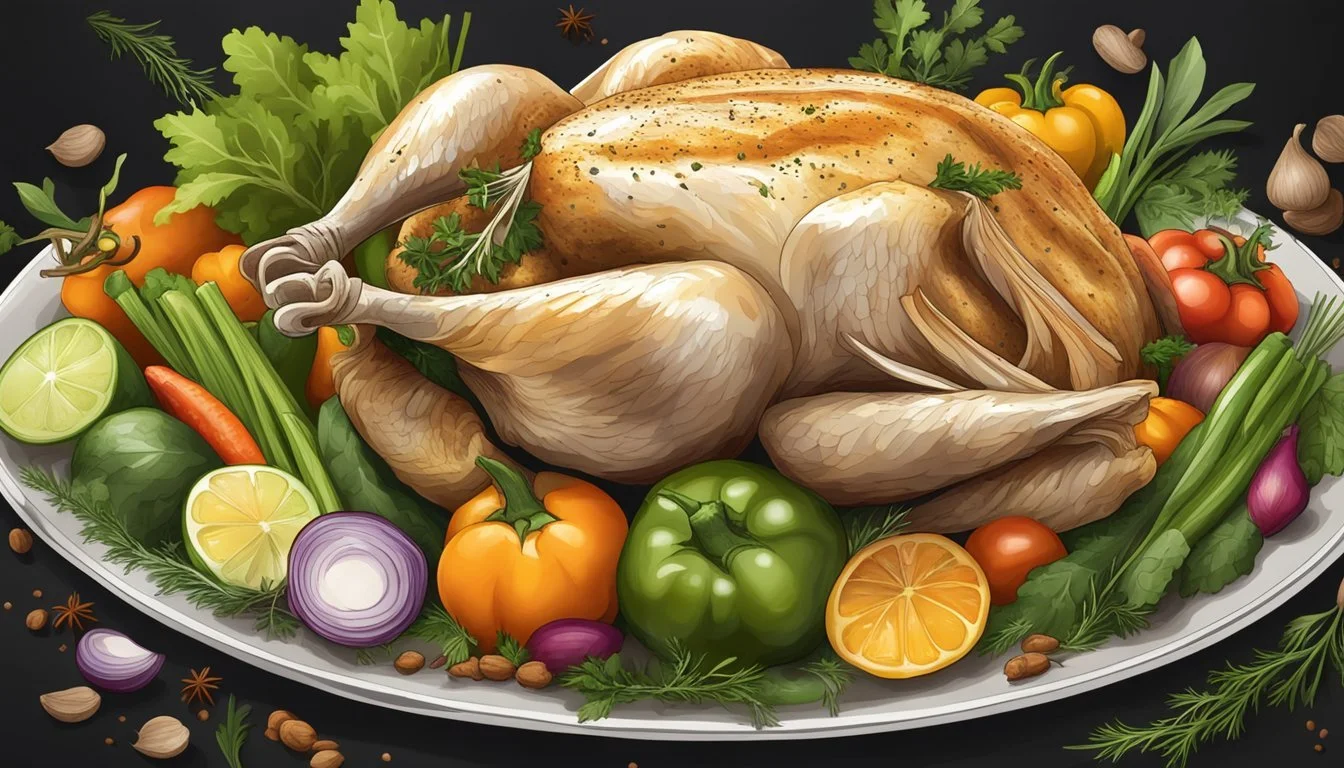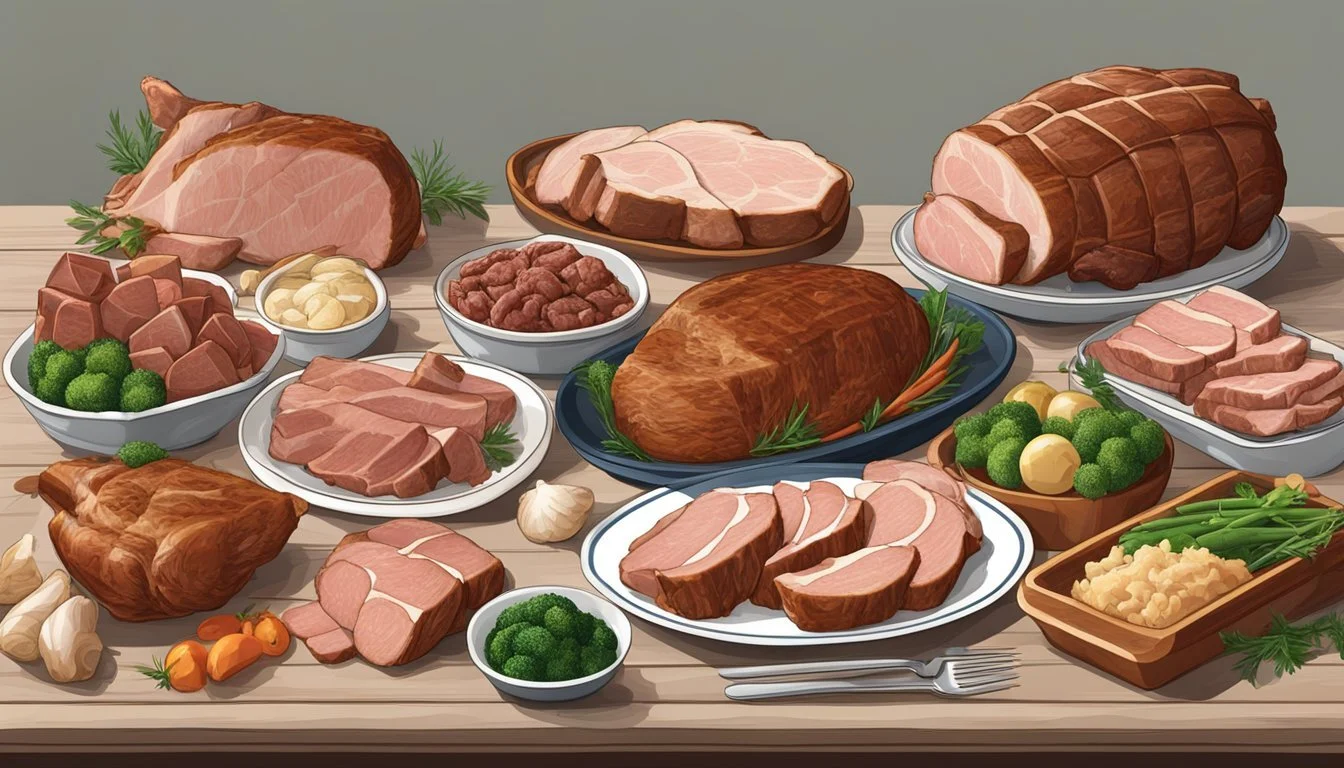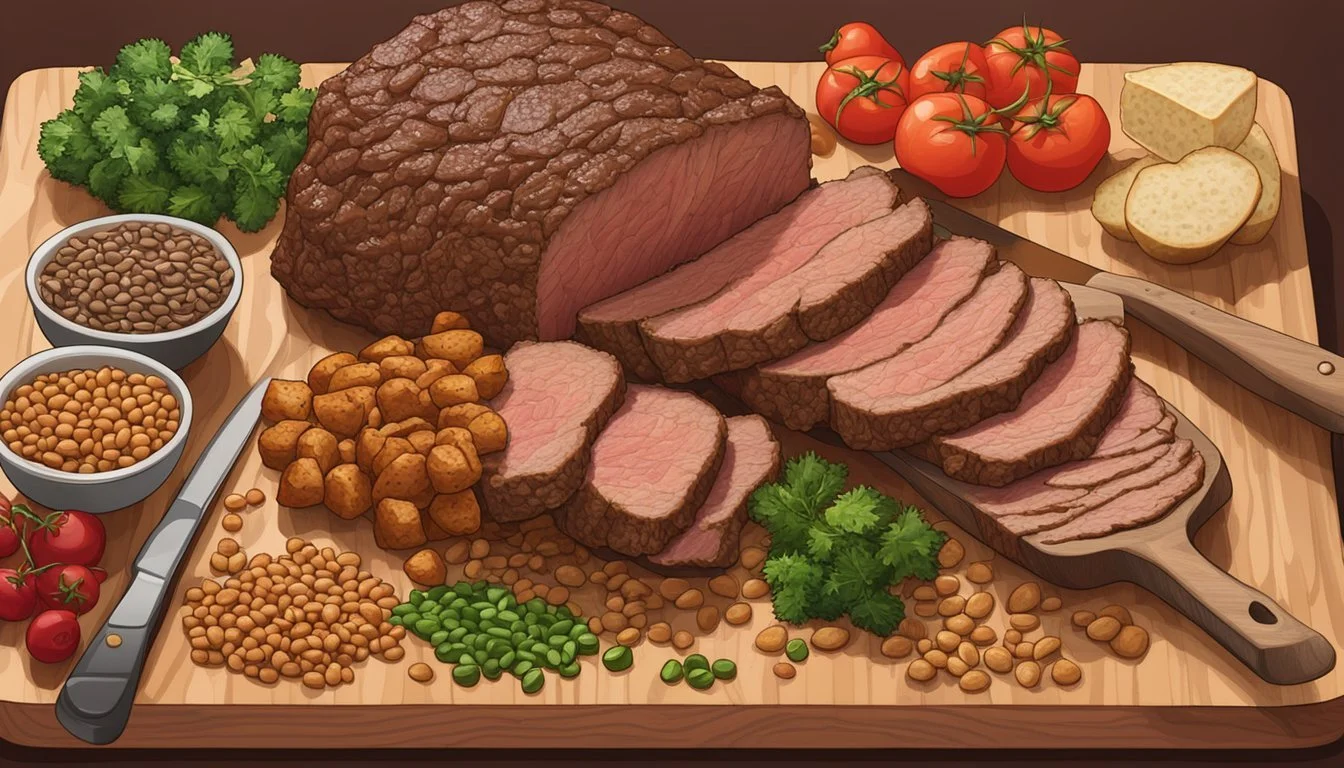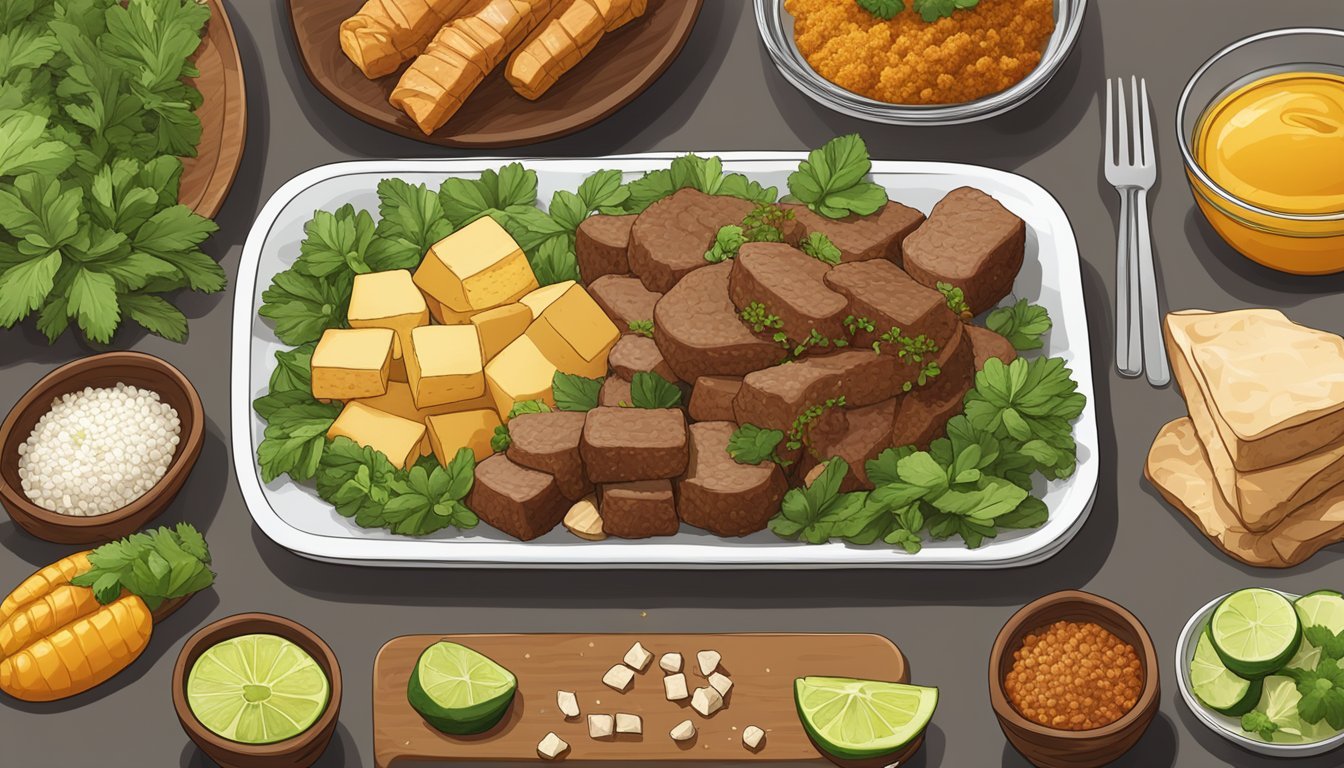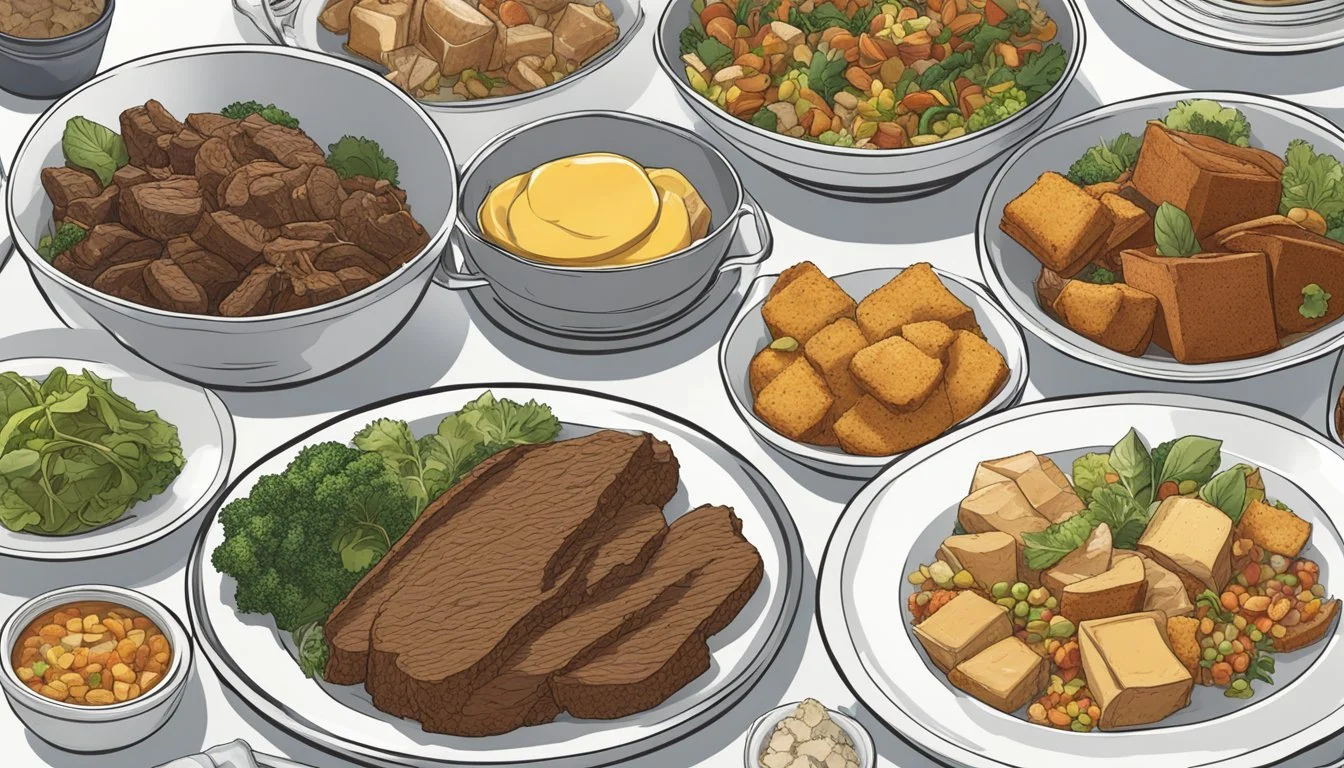Beef Roast Substitutes for Delicious and Flavorful Meals
Finding the perfect beef roast substitute can elevate your dishes without compromising on flavor or texture. A great alternative to chuck roast is the shoulder roast, known for its similar marbling and texture, making it ideal for braising and slow-cooking. This makes it a versatile option for a variety of recipes.
Another excellent choice is the top round roast, which, despite being slightly leaner, still provides a robust flavor and can be used in soups and stews. Using cuts like pork shoulder offers a unique twist with its milder flavor while maintaining a similar texture to beef, broadening your culinary horizons.
For those looking for a steak alternative, tri-tip steak stands out. Known for its tenderness and rich flavor profile, it holds up well in dishes traditionally made with chuck roast, offering a delightful dining experience.
Understanding Beef Roast and Its Unique Qualities
Beef roast is a versatile and flavorful cut renowned for its rich taste, tender texture, and nutritional benefits. Different cooking methods and cuts of beef roast offer varying degrees of umami and beefy flavor, making it an essential part of many culinary traditions.
Nutritional Profile of Beef Roast
Beef roast provides a robust nutritional profile that includes significant amounts of protein and iron. A typical serving can deliver up to 25 grams of protein, essential for muscle repair and growth. Iron content is also high, supporting red blood cell production and preventing anemia.
Additionally, beef roast contains a variety of B vitamins, such as B12 and niacin. These vitamins are crucial for energy metabolism and nerve function. Furthermore, well-marbled beef roasts contribute to the intake of healthy fats, essential for nutrient absorption and flavor enhancement.
Culinary Uses of Beef Chuck Roast
Beef chuck roast is commonly used for its versatility in various cooking methods. Braising, stewing, and slow-cooking are methods that break down the connective tissues, making the beef tender and flavorful. This cut is ideal for pot roasts, beef stews, and hearty soups.
The marbling in chuck roast enriches its flavor, contributing to the umami taste that enhances many dishes. It is suitable for recipes requiring long cooking times, allowing the flavors to meld and deepen. Chuck roast is also wonderful for shredding and using in sandwiches and tacos due to its moist texture.
Importance of Texture and Flavor in Beef Roasts
Texture and flavor are critical factors in choosing and preparing beef roasts. A well-marbled roast offers a rich, beefy flavor and tender texture, making it highly desirable in many recipes. Marbling refers to the intramuscular fat that melts during cooking, adding richness and moisture.
Different cuts offer different textures: rib and loin cuts are tender and fine-grained, while chuck and round cuts are coarser but more flavorful. Cooking methods play a significant role in texture—slow-cooking and braising make tougher cuts tender, while quick roasting preserves the tenderness of finer cuts.
Understanding these unique qualities helps in selecting the right cut for each culinary endeavor, ensuring a delicious and satisfying meal.
Beef Roast Substitutes Overview
When looking for substitutes for beef roast, various factors like marbling, texture, and cooking times need to be considered. Popular alternatives include pork shoulder, ground beef, and top round roast, each with unique benefits and applications.
Criteria for Choosing a Substitute
Selecting a substitute for beef roast requires attention to specific qualities. Marbling and fat content are critical as they influence the flavor and tenderness of the cooked meat.
The texture should also be similar to ensure the dish's consistency meets expectations. Cooking times and methods might need adjustments based on the substitute used. Favorable substitutes should be affordable and accessible while offering a healthier or leaner option if necessary.
Overview of Common Substitutes
Several cuts can effectively replace beef roast while providing desirable flavors and textures. Sirloin Tip Steak is a notable option, especially when available on special. Although typically leaner, it offers a close match in texture.
Pork Shoulder serves as a good alternative, providing a similar texture but with a milder flavor profile. For dishes where a finer texture is acceptable, ground beef works well, though it requires changes to the cooking process.
Shoulder Roast or blade roast delivers excellent results, matching the chuck roast's marbling and suitability for slow cooking. Lastly, the top round roast is another option, being a leaner cut but slightly tougher, thus needing mindful preparation to achieve optimal tenderness.
Poultry as a Substitute
Using poultry as a substitute for beef roast can be a healthier and versatile option. Chicken and turkey offer unique flavors and textures making them suitable for a variety of recipes, including slow-cooked dishes and stews.
Using Chicken in Place of Beef Roast
Chicken is a popular substitute for beef roast due to its broad availability and mild flavor. It works well in slow-cooked recipes where it can absorb spices and seasonings, creating a tender and flavorful dish.
For a beef roast alternative, bone-in chicken thighs or drumsticks are ideal. They release juices that enhance the overall taste of the meal.
Chicken can be marinated with herbs and spices such as rosemary, thyme, and garlic to mimic the robust flavors found in traditional beef roasts. It cooks relatively quickly, ensuring dinner is ready in a fraction of the time while still satisfying the taste buds.
Turkey: A Healthy and Lean Choice
Turkey is another excellent substitute for beef roast, particularly for those seeking a leaner option. It is rich in protein and lower in fat, making it a healthier choice for health-conscious individuals.
Turkey breast is the best cut for roasting, offering a firm yet tender texture. Its mild flavor makes it highly adaptable to various seasonings and marinades.
Slow-cooking turkey can result in a buttery, melt-in-your-mouth texture that rivals even the most succulent beef roast. Melding turkey with robust herbs and spices, such as paprika and sage, can elevate the dish, making it a delightful centerpiece for any meal.
Pork and Lamb Alternatives
For those looking to replace beef roast, pork and lamb offer two excellent alternatives with distinct flavors and culinary applications. These substitutes can accommodate various cooking methods like braising, roasting, and slow-cooking, providing both tenderness and rich taste.
Pork Shoulder: A Versatile Option
Pork shoulder is a great substitute owing to its versatility and flavor profile. Its marbled fat ensures moisture, making it suitable for slow-cooking methods such as braising and roasting. This cut breaks down into tender, juicy meat, perfect for dishes like pulled pork or hearty soups.
When cooked slowly at low temperatures, the connective tissue in pork shoulder dissolves, resulting in a tender and delicious dish. For best results, marinate the pork shoulder beforehand to enhance its flavor. It can also be used as a 1:1 substitute for beef roast, keeping the same cooking techniques.
Lamb Shoulder for a Distinct Flavor
Lamb shoulder offers a distinct, rich taste that stands out as a beef roast substitute. Its chewy texture becomes tender through slow-cooking, making it an excellent choice for roasting and braising. The unique flavor profile of lamb pairs well with aromatic herbs and robust spices.
To achieve optimal tenderness, cook the lamb shoulder slowly at low temperatures. Marinating the meat overnight can enhance its flavor and ensure it remains moist. Lamb shoulder can be used in various dishes, from stews to roasts, offering a savory alternative to beef with a unique twist.
Other Red Meat Substitutes
Other red meat substitutes offer healthier or unique options, often with varying flavors and textures. These alternatives can suit different cooking methods ranging from braising to grilling.
Exploring Venison and Other Game Meats
Venison, obtained from deer, is a popular game meat known for its lean composition and rich, earthy flavor. It's an excellent alternative for those looking for a healthier red meat option, as it contains less fat than beef. Venison steaks can be grilled or pan-seared, while roasts benefit from slow cooking.
Other game meats, such as elk and bison, also offer similarly lean choices. Bison, in particular, is praised for its beef-like taste and tender texture, ideal for making burgers or steaks. Elk meat, similarly lean and flavorful, works well for stews or ground meat dishes.
Lean Cuts from Beef: Sirloin and Round Roasts
Sirloin and round roasts are lean beef cuts that serve as suitable substitutes for fatter cuts like brisket. Top round and beef round roast are particularly noted for their low-fat content and firm texture. These cuts perform best when roasted slowly or braised to tenderize the meat.
Sirloin tip steak is another versatile option. Known for its robust flavor and slightly firmer texture compared to other steaks, it is suitable for grilling or broiling. Top sirloin offers a balance between tenderness and flavor, making it ideal for various dishes, from roasts to stir-fries.
Choosing these lean cuts not only provides a healthier alternative but can also adapt to many culinary preparations, from casual meals to gourmet cooking.
Vegetarian and Vegan Substitutes
Vegetarian and vegan substitutes for beef roasts offer a variety of options that can closely mimic the texture, flavor, and tenderness of traditional beef. These alternatives can be both healthy and flavorful, and they often come with the added benefits of being high in fiber.
Plant-Based Products Mimicking Beef
Plant-based products like seitan and tofu are popular substitutes for beef roasts.
Seitan, made from gluten, is known for its chewy, meat-like texture. It's often seasoned and cooked in ways that replicate the savory flavor of beef. Recipes using seitan can include Vegan Roast Beef Seitan, which can be sliced for sandwiches or served whole for a main dish.
Tofu, though softer, absorbs marinades well, offering flexibility in flavor profiles. For roast purposes, extra-firm tofu is preferable. It's important to press tofu to remove excess water, ensuring a firm, dry texture that's easier to flavor and cook.
Utilizing Mushrooms for their Meaty Texture
Mushrooms, particularly portobello and shiitake, are excellent substitutes due to their naturally tender and meaty texture.
Portobello mushrooms, when marinated and roasted, can offer a juicy and flavorful experience similar to beef. They can be seasoned with herbs and spices to enhance their taste, providing a healthy and fiber-rich alternative.
Shiitake mushrooms bring a rich umami flavor that enhances any dish. Cooking methods such as roasting or sautéing with garlic and soy sauce can elevate their taste, making them suitable for incorporating into classic roast recipes.
Adapting Cooking Methods for Substitutes
Cooking substitutes for beef roast often require adjusting methods to maintain texture and flavor. Modifications for slow cooking and braising can help achieve optimal results with various meat cuts.
Modifications for Slow Cooking and Braising
When using a substitute like pork shoulder or tri-tip roast in slow cooking, it's essential to adjust the cooking time. Pork shoulder may need extra time to break down completely, whereas tri-tip roast, being leaner, might cook faster.
Adding moisture is crucial. Substitutes with lower fat content, such as eye of round steak, benefit from additional liquids like broth or wine. This helps prevent dryness and enhance flavor.
Monitoring the process is key. Substitutes cook differently and need occasional checking to ensure they don’t overcook or dry out. Controlling temperature settings also assists in maintaining a tender outcome.
Creating Flavorful and Nutritious Broths and Sauces
Creating a flavorful and nutritious broth or sauce can elevate any dish. From using homemade broth as a base to incorporating wine and beer for depth, various methods exist to enhance taste and nutritional value.
Homemade Broth as a Foundation for Dishes
Homemade broth serves as a rich foundation for many dishes. It’s crafted by simmering ingredients like beef bones, vegetables, and herbs in water, extracting flavors and nutrients over several hours.
Using beef bones or beef base yields a robust broth, ideal for soups and stews. Mushroom broth and vegetable broth provide vegetarian options, while chicken broth can substitute for a milder taste. Enhance flavor with additions like Worcestershire sauce or soy sauce.
A homemade broth is more nutrient-dense than many store-bought alternatives, often lacking preservatives and added salt. Many cooks prefer using homemade broth for its purity and flavour complexity, making it a valuable asset in culinary practices.
Using Wine, Beer, and Other Liquids in Recipes
Incorporating various liquids like wine, beer, and broths can significantly enhance the flavor profile of a dish. Red wine adds depth and richness, commonly used in beef stews and sauces. Beer, particularly darker varieties, provides a savory, nutty flavor ideal for soups and stews.
Liquids such as beef consommé, chicken bouillon, and liquid aminos offer concentrated flavors perfect for enriching sauces. Miso paste combined with vegetable broth creates a complex broth substitute, adding umami characteristics.
Even tomato paste or Worcestershire sauce, although not a direct replacement for broths, can intensify flavors, thickening and enriching the dish. Experimenting with these liquids can transform a simple recipe into an extraordinary meal.
Incorporating Beef Roast Substitutes into Diverse Dishes
When substituting for beef roast in various dishes, options like tri-tip steak, vegan roast, and chuck roast can be used creatively. Each substitute offers distinct flavors and textures, perfect for a range of recipes from tacos to casseroles.
Classic Dishes Reimagined with Substitutes
Tri-tip steak can effectively substitute in classic roast recipes. Chuck roast works well in slow-cooker and braises due to its higher fat content. Use tri-tip for a leaner alternative with a strong beef flavor.
In stews, both tri-tip and chuck roast can replace traditional cuts. The tri-tip, when smoked, imitates the depth of flavor found in smoked chuck roast.
For casseroles, vegan roast options can mimic beef. Use rich beef broth substitutes to enhance the savory profile. Vegetarian beef seasonings can also add depth.
Innovative Recipes using Alternative Proteins
Vegan and vegetarian roasts provide great variety. Vegetarian roast beef can be shaped and seasoned similarly to traditional beef, then integrated into dishes like tacos and casseroles.
Vegetarian slow-cooked stews benefit from the addition of vital wheat gluten based roasts. These maintain texture and flavor throughout prolonged cooking times.
Use beef broth substitutes to maintain the umami flavor in vegan dishes. Experimenting with bold spices and herbs can result in unique and flavorful braised dishes that rival their meat-based counterparts.
By employing these techniques, one can create diverse and satisfying meals without traditional beef roasts.



